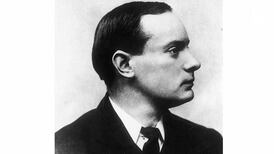The urge to write has been a steady pulse in the lives of Waterford women over the decades, their words still ringing out and dazzling today. This month a stream of writers will visit the home of Molly Keane, the great chronicler of the Anglo-Irish era, in Ardmore, Co Waterford, all wanting to soak up the ambiance of the home that was created over many decades by Molly herself and her two daughters, Virginia and Sally.
The Molly Keane Writers’ Retreat will host its annual writers’ week starting next Monday (17th) and running to Sunday August 23rd, in the presence of special guest Prof Paula Meehan.
Molly Keane lived in the village of Ardmore from 1950 until her death in 1996, turning her small cliff-top bungalow into a cosy, book-lined home. Now, in turn, the Keane stronghold is a mecca for writers. It was here that Molly wrote her Booker Prize runner-up Good Behaviour and other bestsellers such as Time After Time and Loving and Giving. She continued to write even in ill health and late into old age, when she'd sit up in bed each day writing in longhand, rarely having to scratch out or change a sentence, her trusty dog always stretched out beside her.
Dervla Murphy
In Lismore, less than 20 miles up the road from Ardmore, there’s another famous writer, whose pen has never run dry. Now in her eighties, Dervla Murphy’s latest book,
Between
River & Sea: Encounters in Israel and Palestine
, was published in February this year, while the town’s annual Immrama Travel Writing Festival, founded in part recognition of Murphy’s legacy, saw huge attendances earlier this summer.
In the Viking city itself, the playwright Hilary Fannin, with proud Waterford roots, came back for the world premiere of her play Famished Castle in Waterford's Theatre Royal in May this year. Is it too parochial to recall that Fannin's great-grandfather was postmaster-general of Waterford and that the family hailed from Newtown? It was here in the city by the Suir that Fannin's grandfather, Nathaniel Hand, was born.
Some women writers from the gentle county are not as well known outside the Déise but their contributions still reverberate today. Rosamund Jacob, a Waterford Quaker woman, who was born in 1888, kept a diary all her life. Although never published, she is quoted at length in a recently published history book by Maurice Walsh. Writing about Ireland between 1918 and 1923, Bitter Freedom records many episodes from Jacob's work, such as her delight in a visit to the cinema where she gives "a breathless account of random films she saw in an afternoon or evening". Walsh adds that "she found it delightful that American films introduced the viewer to the hero's bedroom and found a scene of a fancy-dress banquet where all the men exhibited bare arms and shoulders 'a pleasing novelty'".
Jacob describes her experiences at the beginning of the Civil War in the summer of 1922 in Dublin when gunshots could be heard coming from the Four Courts. She describes, according to Walsh, how she was walking home “through what sounded like an orgy of sniping” and asked a man if there had been much shooting. “Oh! Any amount,” he told her with a generous smile, as if she was seeking it out for pleasure.
Later when she went to see Cathal Brugha’s body lying in state, she thought he looked different from her remembrance of him.
As the historian Walsh quotes her: “his hair was nearly black and his face looked very thin and stern and ascetic. She noted how queer the hands of a dead person looked; a livid pale yellow. Alongside Brugha, she noted a boy who had been shot outside Mountjoy Prison, a great clot of blood on his forehead.”
Teresa Deevy
Lest we forget, an equally forgotten but significant writer is Teresa Deevy, the hugely successful 1930s playwright who was from Waterford. Deevy wrote a string of popular plays that were staged on Broadway during her lifetime. A recent revival of interest in her work saw her most popular play,
Katie Roche
, once again attracting crowds to a theatre in New York while two other plays were read to packed auditoriums. In the first half of the 1930s Deevy was becoming one of the most frequently performed women playwrights in the world and it’s easy to forget that Deevy continued to write prolifically for the theatre in spite of having become deaf while still a young woman.
For further information about the Molly Keane Writers’ Retreat, visit mollykeanewritersretreats.com








